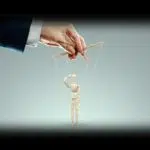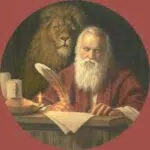‘Il Giorno Della Liberazione’ (National Liberation Day) is celebrated in Italy on April 25 every year as the day that marks the beginning of the end of Nazi fascism. Alcide De Gasperi, the then prime minister of Italy, established this day as a national holiday in 1949. Also known as ‘La Festa Della Resistenza’ (Anniversary of the Resistance), it is a tribute to all political partisans who stood up against the Nazis.
History of National Liberation Day
On September 3, 1943, Italy signed an armistice (the Armistice of Cassibile) with the Allies during World War II. The country had no official guide.
On September 8, German forces took possession of railway stations, airports, and barracks. And September 9 saw the formation of the National Liberation Committee. Having a dissolved Italian state with no credibility of its leaders, the partisans turned to the war for liberation.
The Italian partisan resistance consisted of different groups and political parties like the Italian Socialist Party, the Italian Communist Party, the Christian Democrats, the Italian Liberal Party, and more. All of them together formed the National Liberation Committee.
Huge parts of the population took part in the partisan formations and made up an army of about 300,000 people (with estimated 70,000 women). The first attack was on Bologna on April 19, 1945, and it was liberated on April 21, followed by Genoa (liberated on April 23), Milan and Turin (liberated on April 25), and Venice (liberated on April 28). And, finally, the German forces surrendered on May 2.
On the morning of April 25, partisan Sandro Pertini announced a general strike. He went on to become the president of the republic. The Liberation led to a referendum on June 2 — one which brought an end to the monarchy and the formation of the Italian Republic. This history continues to influence the Italian society of today.
National Liberation Day timeline
The Armistice of Cassibile is signed between Italy and the WWII Allies.
The National Liberation Committee is created, bringing together all the anti-fascist parties into one single body, in Rome.
Both the Nazi soldiers and those of the fascist Republic of Salo withdraw from the northern industrial cities of Milan and Turin.
American forces arrive on May 1 and German forces officially surrender on May 2, 1945.
National Liberation Day FAQs
What is the Independence Day of Italy?
National Liberation Day in Italy marks the day of the formation of the Resistance to fight against the Nazis for liberation.
Did Italy switch sides in WWII?
It was more than just switching sides. On September 8, 1943, General Dwight D. Eisenhower announced Italy’s complete surrender to the Allies and sanctioned an end of its alliance with Nazi Germany.
How do they celebrate Liberation Day in Italy?
It is a national holiday. Most businesses and schools are closed. Most of all, the song ‘Bella Ciao’ is heard in parades, rallies, and other events like food festivals, etc. People visit the tombs of the dead partisans who fought for the freedom of Italy.
How To Celebrate National Liberation Day
Attend the parade in Rome
One of the most elaborate celebrations of Italy, the parade in Rome is attended by thousands every year: a grand display remembering the sacrifices of all who died fighting for the Italian democracy. You can also pay a visit to the tombs of the partisan soldiers. One such place is the Ardeatine Caves mausoleum where the Nazis killed 335 Romans in 1944.
Visit World War II sites
Visit the many places, monuments, and battlegrounds related to WWII. One such place is the Montecassino Abbey, where a huge decisive battle took place towards the end of the war. "A Travel Guide to World War II Sites in Italy: Museums, Monuments, and Battlegrounds" is a great book by Anne Leslie Saunders that offers a lot of info on more such WWII spots.
Celebrate Festa di San Marco in Venice
Celebrate one of Venice’s most significant festivals on April 25 — ‘Festa di San Marco’ — honoring Saint Mark, the patron saint of Venice. There is a procession held at Saint Mark’s Basilica as well as Saint Mark’s Square (‘Piazza San Marco’).
5 Interesting Facts About Italy
‘Bella Ciao’
During World War II, ‘Bella Ciao’ was the anthem of the Italian resistance movement.
Many children
Under the rule of Mussolini, Italian families were encouraged to have more children using substantial tax breaks as the key.
Pizza
The world-famous pizza hails from the city of Naples, Italy.
Many governments
Since its liberation, Italy has had over 60 governments.
Cats have rights
A person convicted of killing a cat, be it stray or owned, could face a fine of €10,000 and up to three years in prison.
Why National Liberation Day Is Significant
It celebrates the liberation of Italy
The day marks the beginning of Italy’s fight against the Nazis. It also celebrates the final victory over Mussolini’s dictatorship.
It honors the resistance
The day is celebrated to honor all the members of the resistance who died fighting for Italy’s freedom.
It marks the end of WWII
The day marks the end of World War II for Italy and the birth of the Italian Republic.
National Liberation Day dates
| Year | Date | Day |
|---|---|---|
| 2026 | April 25 | Saturday |
| 2027 | April 25 | Sunday |
| 2028 | April 25 | Tuesday |
| 2029 | April 25 | Wednesday |
| 2030 | April 25 | Thursday |











































